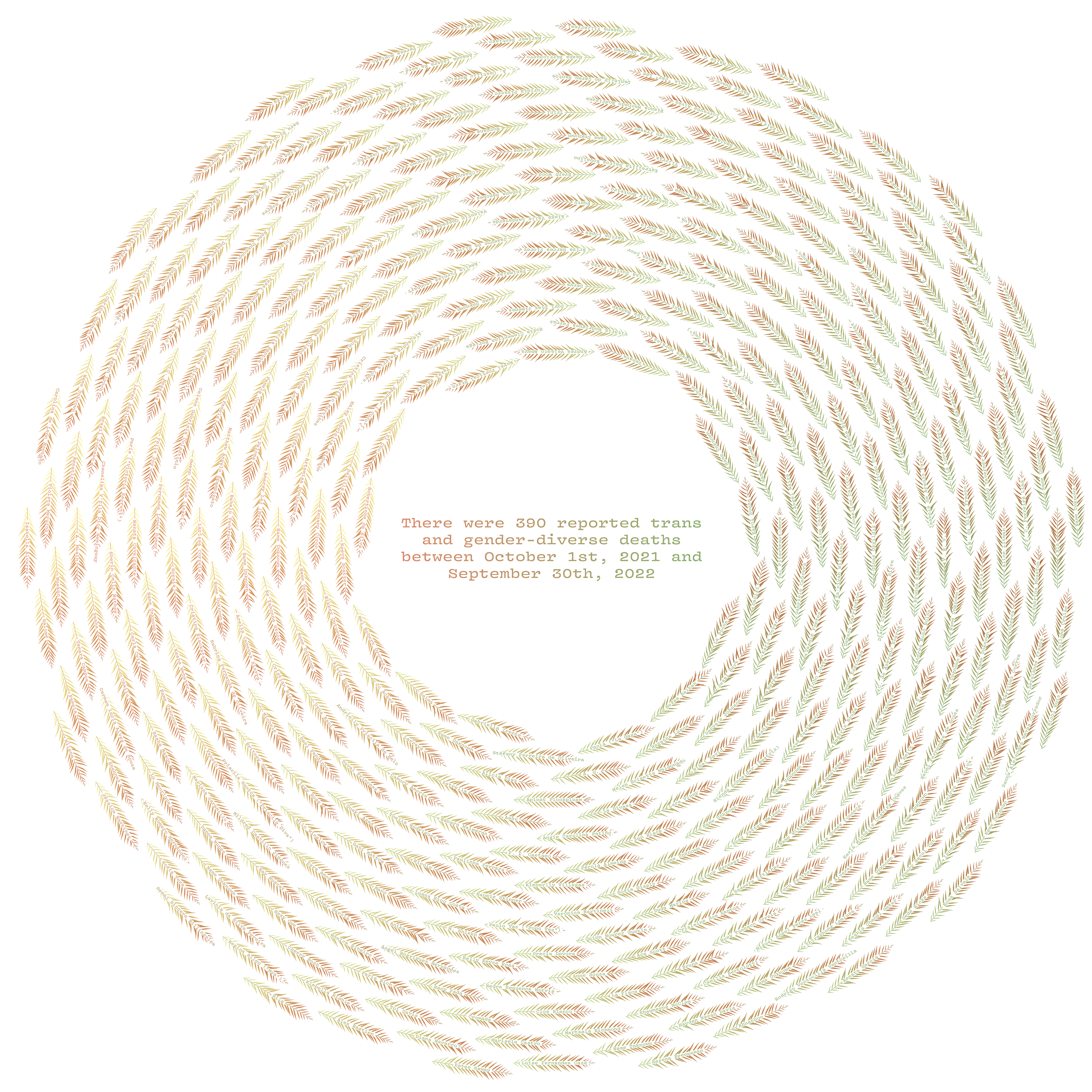A data visualization wreath depicts trans and gender-diverse lives lost in 2022, many due to anti-transgender violence. Each life lost is represented with a unique bald cypress leaf.
In partnership with LGBTQ+ data science organization Gayta Science. Presented at Outlier Conference in February 2021 and published in published in Data Science by Design’s “Our Environment” Anthology.
Team: Kelsey Campbell
Time: ongoing (since 2020)
Role: Writing, design and code development
Tools: p5.js, paper.js
In the southern United States, bald cypress bear witness to the constant flow of both water and time, resonating with the spirit and resilience of the transgender community. Their massive root structures enable them to survive hurricanes and floods while protecting riverbanks from damage.
This project questions prevailing theories methods of visualizing data about death, asking: can a data visualization simultaneously connect us to lives lost and our local ecology? Instead of using disembodied geometric forms, we take notes from our local ecology (bald cypress) and historic plant-human grief traditions (wreath making) to create a generative simulation.
The cultural and ecological specificity of our visualization also embraces queer and feminist knowledge practices. In particular, it demonstrates how this data is embodied: the bodies it represents, and the bodies of those who record and design visualizations.
Often taking the form of crisp line charts, data visualizations are prominent tools helping us make sense of immense death in this time of global pandemic. Yet, a sense of humanity is often lost in a deluge of visualizations employing neat categories and disembodied, geometric representations of the dead—evoking a sense analysis and numbness in a moment of loss that also deserves weight and grief.
We interrogate these critiques of data visualizations in our project to visualize data of lives lost due to anti-trans hate. Our work aims to emphasize visibility and awareness around anti-trans violence and to cultivate a sense of solidarity and legitimacy of transgender identities.
In this work aiming to make these losses seen—and felt—we point towards how one might construct a data visualization that lets us live in good relationship to the dead represented as data: to bear witness to the gravity of that loss, and reinstate value in lives taken. Even further, we explore how data-driven, interactive storytelling may help us hold the weight of grief of the deaths made visible and visceral. The outcomes of our work aim to empower any bearer of sensitive data to think critically about how to design data visualizations that invite us to form meaningful relationships and conversations about the humanity within.



